McDonnell Douglas Phantom F-4B US Navy
Production Time 9 to 10 weeks
Shipment is by FedEx, UPS or DHL International Express Courier with a normal door-to-door delivery time worldwide of within 2-3 business days after dispatch. Due to the current volatility of world fuel prices, the amount mentioned here is our best estimate for DHL and UPS and may be subject to change at the time of shipping.

Model Description: McDonnell Douglas Phantom F-4B US Navy Wood Replica Scale Custom Jet Model
Manufacturer: McDonnell Douglas
Wingspan: 10.4 Inches (26.4 Centimeters)
Height: 4.45 Inches (11.3 Centimeters)
Scale: 1:44
Registration: VF-14
$259.50
Production Time 9 to 10 weeks
-
United States dollar ($)
-
Pound sterling (£)
-
Euro (€)
-
Australian dollar ($)
-
Canadian dollar ($)
-
Singapore dollar ($)
-
Swiss franc (CHF)
-
Japanese yen (¥)
-
Danish krone (kr.)
-
Hong Kong dollar ($)
-
Norwegian krone (kr)
-
Swedish krona (kr)
-
United Arab Emirates dirham (د.إ)
General Product Description
Our PlaneArt McDonnell Douglas Phantom F-4B US Navy model exhibits unique, unrivaled quality and detailed design to come as close as possible to the accuracy of the actual plane. It comes as standard with a robust, durable base or stand which is available in a variety of different finishes designed to match your own personal requirements including solid wood, wood with polished metal supports or adjustable wood wall mount and will be ready within about 9-10 weeks from placement of order.
The McDonnell Douglas Phantom F-4B US Navy model is made of the finest kiln dried renewable mahogany wood (commonly known as Lauan or Meranti) which has undergone many stages of carving and meticulous and careful sanding giving the beautiful, finished museum quality masterpiece. Many collectors and model connoisseurs demonstrate their preference for genuine handmade and hand painted mahogany wood models rather than plastic or die cast (diecast) alternatives due to the overall look and totally different feel of the item - we trust you will find the same. We can however, if required produce the same model in Solid Cast Resin so just click and contact us for further information. Our craftsmen and gifted artisans ensure that our finely handcrafted model airplanes match the precise blueprint details of the original aircraft. The paint scheme, markings and parts are closely matched, reflecting the original aircraft. This stylish top-quality desktop replica model will surely enthrall anyone who receives this as a gift and for sure one of the most appropriate and desirably collectable gifts for any aviation enthusiast or avid military jet aircraft collector whilst also displaying a perfect resemblance to the actual real life version.
There are many types of military jet aircraft, but the basic types are bombers, fighters, fighter bombers, spotter planes, transporters, patrol aircraft, trainers, and reconnaissance and observation aircraft. All these types of aircraft are used for different types of missions. If you're a fan of historic or present-day military aviation, our model aircraft will bring the excitement and character of these aircraft right into your own home.
If you require, we can also make the McDonnell Douglas Phantom F-4B US Navy model in any other military, government or even private livery or colour scheme you require and if necessary, in a different size or scale. Just click here to contact us with a description or photographs of what you require, and we will let you have a quotation for the necessary customization by return email. We can also make bespoke scale replicas of any other private / civil commercial airliner or airliners, helicopter, glider, gliders with engines, military propeller, warplane jets, biplane, triplane, tail fin, spacecraft, rocket or NASA model you require in any airline, military or civilian livery or colors. We also produce model airships, blimps, dirigibles, blimps, boats, and ship collectibles. Wall plaque or seal for military, government or private customers. Again, by clicking here to contact us just let us know exactly what you need.
As you may or may not be aware the trade name and copyright permissions for this McDonnell Douglas aircraft are now under the ownership of the Boeing Company and as such, we are proud to be one of the very few international and fully licensed manufacturers of Boeing solid mahogany wood models. You may be interested to read more about the fascinating background to the famous aviation names now under the Boeing umbrella by clicking on the following “Officially Licensed Product” image below:
The McDonnell Douglas F-4B Phantom II: A Cornerstone of US Navy Airpower
The McDonnell Douglas F-4B Phantom II holds a revered spot in the annals of military aviation, particularly for its significant role in the United States Navy during the Cold War and the Vietnam War. Developed in the late 1950s and entering service in 1961, the F-4B was a twin-engine, supersonic jet fighter-bomber capable of remarkable performance and versatility, qualities that endeared it to the hearts of its pilots and cemented its place in aviation history.
Origins and Design:
The F-4 Phantom II was initially conceived by McDonnell Aircraft, which later merged with Douglas Aircraft to form McDonnell Douglas. The aircraft was designed to meet a U.S. Navy requirement for a supersonic fighter with long-range, high-load carrying capacity, and the ability to perform both air-to-air and air-to-ground missions. The resulting F-4B was the first model of the Phantom II series to enter service with the U.S. Navy.
With its distinctive tandem two-seat, twin-engine configuration, and a large, leading-edge swept wing, the F-4B was immediately recognizable. Its power came from two General Electric J79-GE-8 engines, enabling speeds over twice the speed of sound. This formidable powerplant allowed it to carry a vast array of weaponry, including air-to-air missiles, air-to-ground missiles, and various bombs.
Combat Service:
The F-4B Phantom II quickly proved its mettle in combat during the Vietnam War. It was involved extensively in both ground-attack and air superiority missions. Navy F-4Bs were among the first U.S. aircraft deployed in Vietnam, and they played pivotal roles in key operations throughout the war. Their ability to carry a heavy payload and strike with precision made them invaluable in both offensive and defensive roles.
One of the most celebrated aspects of the F-4B was its radar and weapon systems. Equipped with the advanced AN/APQ-72 radar, the F-4B could track and engage enemy aircraft at long distances, a capability that was enhanced by the use of AIM-7 Sparrow and AIM-9 Sidewinder missiles. This technology combination made the F-4B a formidable opponent in air-to-air combat, where it claimed numerous enemy aircraft.
Technological Innovations:
The F-4B also featured several technological innovations. It was one of the first aircraft to utilize an afterburner, giving it exceptional thrust and speed in combat situations. Moreover, its use of hydraulic controls and a sophisticated autopilot system set new standards for fighter jet performance and capability.
Despite its prowess, the F-4B was not without its challenges. The aircraft’s size and weight could make it less maneuverable than some of its adversaries, particularly at lower speeds. Furthermore, the Phantom II was initially designed without an internal gun, a decision that was later revised in subsequent models due to combat experience in Vietnam.
Legacy and Retirement:
The F-4B served with distinction until it was gradually phased out in favor of newer models like the F-4J and eventually more modern fighters such as the F-14 Tomcat and F/A-18 Hornet. The last operational flights of the F-4B in the U.S. Navy occurred in the early 1980s.
Today, the F-4B Phantom II is remembered as a pivotal player in the Cold War and Vietnam War eras. Its impact extends beyond its immediate combat achievements, influencing future aircraft design and tactics. The F-4B’s legacy is preserved in several air museums across the United States, where it continues to inspire awe and respect for its service to the country.
In summary, the McDonnell Douglas F-4B Phantom II was more than just a piece of military hardware; it was a symbol of American airpower and technological might during a critical period of the 20th century. Its contributions to naval aviation history remain profound and enduring.
| Weight | 6 kg |
|---|---|
| Dimensions | 17 × 10.4 × 4.45 in |


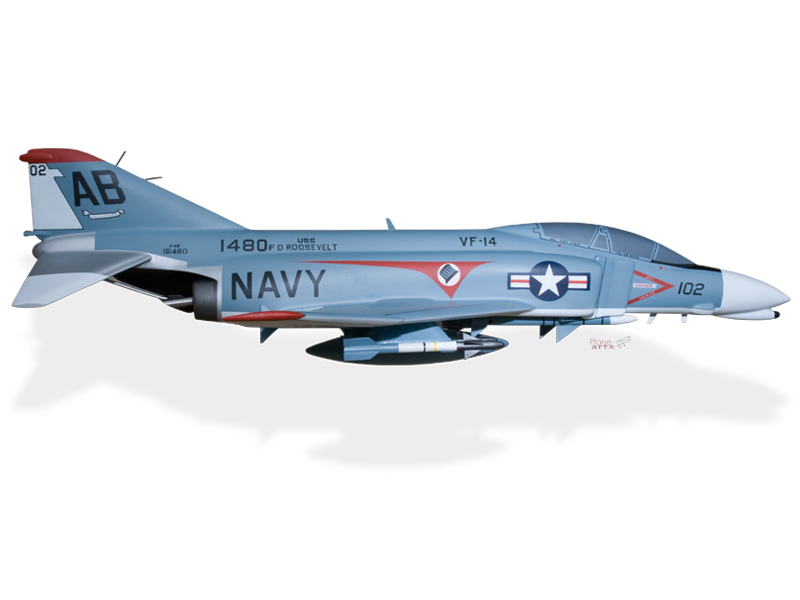

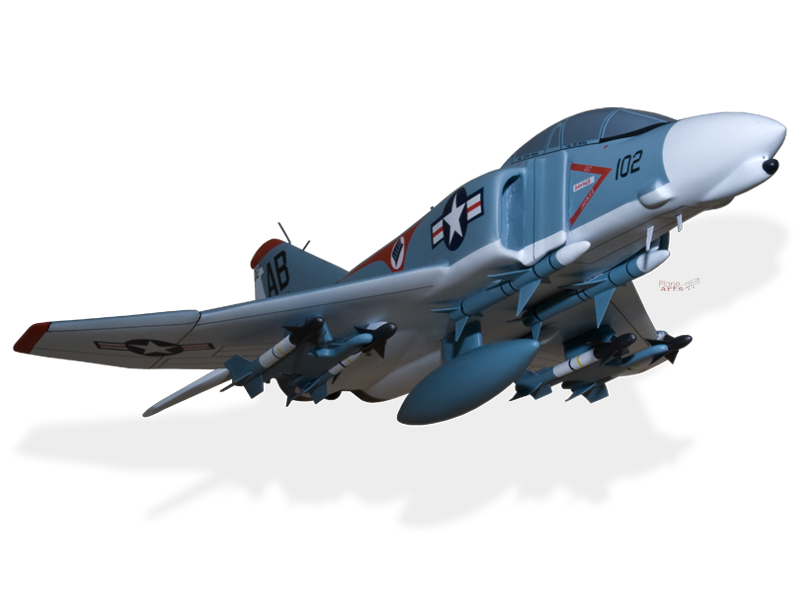
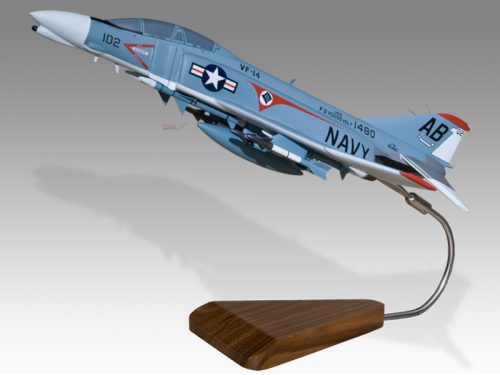
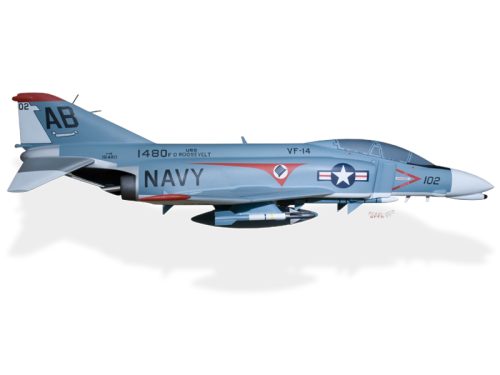

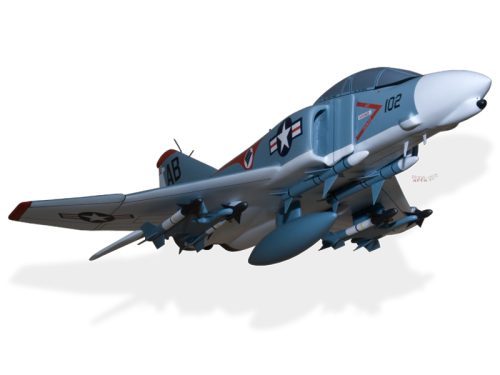

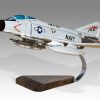

Reviews
There are no reviews yet.